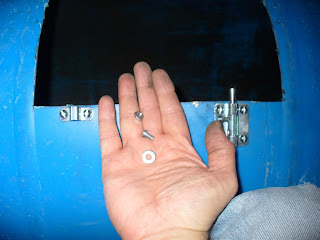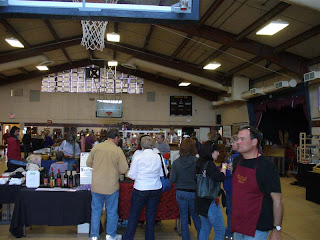Saturday, February 27, 2010
Mike Doughty Show, Club Congress, Tucson, AZ 2/26/2010
Wednesday, February 24, 2010
How To Brew Compost Tea (A Super Nutrient-Rich Liquid Plant Food)
First of all, compost tea is not for drinking! I can only imagine how foul it might taste. Of course, it might taste
pretty good. But however it tastes I suspect it would be full of pro- and not-so-pro-biotics!
Compost tea is a nutrient dense liquid plant food that is literally alive with beneficial bacteria and micro-nutrients that are harvested and propagated from your compost. I have read that the nutritional value to your soil is up to ten times greater than simply applying the compost directly (though, of course, there are plenty of reasons to do that as well). This liquid "fertilizer"--though I hesitate to use that term and all of its negative connotations--can be used indoors or out, should be generally odorless, can be sprayed or poured on the leaves, the soil, whatever, and really packs a punch for your plants. And it's easy and inexpensive to make!
There are some things you will need:
1 five gallon bucket (at least one)
1 sack of some sort for each bucket of tea you plan to brew. Almost anything will do as long as it's not waterproof and is fine enough to keep most of your compost out of the liquid. Some people skip this step, but then they have to filter the tea once it's brewed. I find that using a giant "tea bag" is much easier. I have used an old pillow case but a burlap sack or something of that nature will work fine. It should be big enough to hold a half to a whole gallon of compost.
1 simple aquarium pump. Usually the smallest ones are good for a ten gallon tank, but check the ratings to be sure. The one I bought was about six bucks.
1 aquarium airstone. Now, as you can see in the photos, I bought one long one--about twelve inches long. It seems ideal because it gets air throughout the bucket. Some people buy a gang valve and split it into three with a small airstone at the end of each tube resting on the bottom of the bucket. I'm sure that works great, but will cost slightly more than my one long stone.
You'll also need enough aquarium tubing to attach from the pump to the airstone allowing for full submersion of the airstone. I bought an eight foot section and it was plenty.
2 oz. unsulphured molasses
All told I put less than ten bucks into the "kit" and I am sure it wouldn't take long to spend a lot more than that on liquid plant food purchased at the store!
The first step is to put some of your excellent homemade compost into the bag. If you don't have any homemade compost, store bought organic compost is fine. (Make sure it's organic!)
Tie the bag off like a big tea bag and rest it on the bottom of the bucket.
Fill your bucket up with water from your rain barrel. If you don't have a rain barrel you can use water from the hose but you should let it sit in a separate bucket for at least several hours for the chlorine and whatnot to evaporate out. You'll want the bucket almost full, but not quite. Make sure your airstone is fully submerged.
Add your molasses to the water--this is booster food for your colony.
Dry your hands (don't want any shocking surprises!) and plug in your little pump. Your bucket of water should start bubbling away. The airstone is necessary because it is providing life-giving oxygen to your colony of beneficial bacteria.
Depending on the temperature, in twelve to twenty-four hours you will have a bucket of super-nutritious liquid plant food in the form of compost tea. As soon as you unplug the pump the bacteria start to die off. You'll want to apply your tea to your plants within four hours of that time. Also, the tea is light sensitive--it will break down quickly in the sun, so it is best to feed your plants with your compost tea either early in the morning or in the evening.
I think that pretty much covers the process. Get to it. Brew yourself a nice cup of Pu Erh and enjoy sharing your own cup of tea during your back yard garden tea party!



















































